Brokers With Volatility Index



Brokers with volatility index products, such as the CBOE VIX 75, allow investors to measure risk or fear within a market and to capitalize on the resulting profit potential. Here, we list the best brokers with volatility indexes alongside detailed reviews. Find out how to trade volatility indices today.
Best VIX Brokers
Our team tested and compared dozens of volatility index brokers and these 6 are the best:
Here is a short summary of why we think each broker belongs in this top list:
- eToro USA - eToro is a social investing platform that offers short-term and long-term trading on stocks, ETFs, options and crypto. The broker is well-known for its user-friendly community-centred platform and competitive fees. With FINRA and SIPC oversight and millions of users across the world, eToro is still one of the most respected brands in the industry. eToro securities trading is offered by eToro USA Securities, Inc.
- Dukascopy - Established in 2004, Dukascopy Bank SA is a Swiss online bank and brokerage providing short-term trading opportunities on 1,200+ instruments, including binaries. A choice of accounts (JForex, MT4/5, Binary Options) and sophisticated platforms (JForex, MT4/MT5) deliver powerful tools and market data for active traders.
- AZAforex - Established in 2016, AZAforex is an offshore broker offering short-term trading on 235+ global financial markets, including through binary options with payouts of up to 90%. Three accounts (Start, Pro and VIP) offer unique features, but all provide access to the broker’s Mobius Trader 7 platform, which has benefited from performance upgrades over the years.
- AvaTrade - Established in 2006, AvaTrade is a leading forex and CFD broker trusted by over 400,000 traders. Operating under regulation in 9 jurisdictions, AvaTrade processes an impressive 2+ million trades each month. Through like MT4, MT5, and its proprietary WebTrader, the broker provides a growing selection of 1,250+ instruments. Whether it’s CFDs, AvaOptions, or the more recent AvaFutures, short-term traders at all levels will find opportunities. With terrific education and 24/5 multilingual customer support, AvaTrade delivers the complete trading experience.
- IC Markets - IC Markets is a globally recognized forex and CFD broker known for its excellent pricing, comprehensive range of trading instruments, and premium trading technology. Founded in 2007 and headquartered in Australia, the brokerage is regulated by the ASIC, CySEC and FSA, and has attracted more than 180,000 clients from over 200 countries.
- XM - XM is a globally recognized forex and CFD broker with 10+ million clients in 190+ countries. Since 2009, this trusted broker has been delivering low trading fees across its growing roster of 1000+ instruments. It’s also highly regulated, including by ASIC and CySEC and offers a comprehensive MetaTrader experience.
Brokers With Volatility Index Comparison
| Broker | Minimum Deposit | Minimum Trade | Platforms | Regulator |
|---|---|---|---|---|
| eToro USA | $100 | $10 | eToro Trading Platform & CopyTrader | SEC, FINRA |
| Dukascopy | $100 | 0.01 Lots | JForex, MT4, MT5 | FINMA, JFSA, FCMC |
| AZAforex | $1 | 0.0001 Lots | Mobius Trader 7 | GLOFSA |
| AvaTrade | $100 | 0.01 Lots | WebTrader, AvaTradeGO, AvaOptions, AvaFutures, MT4, MT5, AlgoTrader, TradingCentral, DupliTrade | ASIC, CySEC, FSCA, ISA, CBI, FSA, FSRA, BVI, ADGM, CIRO, AFM |
| IC Markets | $200 | 0.01 Lots | MT4, MT5, cTrader, TradingView, TradingCentral, DupliTrade, Quantower | ASIC, CySEC, FSA, CMA |
| XM | $5 | 0.01 Lots | MT4, MT5, TradingCentral | ASIC, CySEC, DFSA, IFSC |
eToro USA
"eToro remains a top pick for traders looking for leading social investing and copy trading services. With a low deposit, zero commissions and an intuitive platform, the broker will meet the needs of newer day traders."
Jemma Grist, Reviewer
eToro USA Quick Facts
| Bonus Offer | Invest $100 and get $10 |
|---|---|
| Demo Account | Yes |
| Instruments | Stocks, Options, ETFs, Crypto |
| Regulator | SEC, FINRA |
| Platforms | eToro Trading Platform & CopyTrader |
| Minimum Deposit | $100 |
| Minimum Trade | $10 |
| Account Currencies | USD |
Pros
- A free demo account means new users and prospective day traders can try the broker risk-free
- Investors can access Smart Portfolios for a more hands-off approach, covering a range of sectors and markets such as renewable energy and artificial intelligence
- The low minimum deposit and straightforward account opening process means beginners can get started quickly
Cons
- Average fees may cut into the profit margins of day traders
- There's no MetaTrader 4 platform integration for traders who are accustomed to using third-party charting tools
- There's a narrower range of day trading instruments available compared to competitors, with only stocks, ETFs and cryptos
Dukascopy
"If you’re an experienced trader, Dukascopy provides the tools you need: JForex for algorithmic strategies, competitive spreads from 0.1 pips, leverage up to 1:200, and the peace of mind of using a Swiss-regulated bank and broker."
Christian Harris, Reviewer
Dukascopy Quick Facts
| Bonus Offer | 10% Equity Bonus |
|---|---|
| Demo Account | Yes |
| Instruments | CFDs, Forex, Stocks, Indices, Commodities, Crypto, Bonds, Binary Options |
| Regulator | FINMA, JFSA, FCMC |
| Platforms | JForex, MT4, MT5 |
| Minimum Deposit | $100 |
| Minimum Trade | 0.01 Lots |
| Leverage | 1:200 |
| Account Currencies | USD, EUR, GBP, CAD, AUD, NZD, JPY, ZAR, TRY, SEK, NOK, DKK, CHF, HKD, SGD, PLN, CZK, AED, SAR, HUF, MXN |
Pros
- Dukascopy offers tight spreads starting from 0.1 pips, leverage up to 1:200 (depending on the jurisdiction), and volume-based commissions that reward high-frequency traders.
- Dukascopy features some of the best research we’ve seen, even a professional TV studio in Geneva covering financial news, market analysis, and daily insights from professionals.
- Dukascopy is regulated by the Swiss Financial Market Supervisory Authority (FINMA) as both a broker and a bank, ensuring top-tier financial security and adherence to strict standards.
Cons
- Dukascopy's withdrawal fees are higher than most competitors we’ve tested, particularly for bank wire transfers, which may deter traders who require frequent access to their funds.
- While Dukascopy provides some educational resources and 24/7 support, the complexity of its platforms and tools required extensive testing and may overwhelm newer traders.
- While JForex is feature-rich, it has a steep learning curve, making it less suitable for beginner traders who might prefer simpler platforms.
AZAforex
"AZAforex is best suited to active traders looking to make all-or-nothing bets on global markets through binary options and those looking for high leverage up to 1:1000 in return for weak regulatory safeguards."
Christian Harris, Reviewer
AZAforex Quick Facts
| Bonus Offer | 25% Crypto Deposit Bonus, 120% Loyalty Bonus, 30% Spread Rebate |
|---|---|
| Demo Account | Yes |
| Instruments | CFDs, Forex, Stocks, Indices, Commodities, Crypto, Binary Options |
| Regulator | GLOFSA |
| Platforms | Mobius Trader 7 |
| Minimum Deposit | $1 |
| Minimum Trade | 0.0001 Lots |
| Leverage | 1:1000 |
| Account Currencies | USD, EUR, GBP, CAD, AUD, NZD, JPY, MYR, IDR, CHF, RUB, THB, VND, UAH, CNY |
Pros
- AZAforex provides high leverage of up to 1:1000, allowing for potentially greater returns with smaller capital. While this comes with increased risk, it's an attractive feature if you are an experienced trader looking for aggressive growth strategies.
- AZAforex supports a huge and growing variety of payment methods, including bank transfers, credit/debit cards, e-wallets, and cryptocurrencies, providing flexibility for funding and withdrawals. This variety accommodates traders from different regions and preferences.
- Few brokers offer binary options as part of their portfolio. Still, AZAforex includes them, allowing you to speculate on short-term price movements with fixed risk and reward up to 90%.
Cons
- AZAforex offers basic trading guides and a blog but lacks robust educational tools such as video tutorials, webinars, or interactive learning resources. This makes it less appealing for beginners who need comprehensive learning support. A lot of the content is outdated, too.
- AZAforex still operates without regulation from a recognized financial authority, which raises concerns about transparency, fund safety, and accountability. You may have no recourse in disputes, making it riskier than regulated brokers.
- While functional during testing, the Mobius Trader 7 platform is proprietary and not widely used by other brokers. This creates risks of potential price manipulation or discrepancies in market data, as there's no external verification like with MetaTrader or cTrader.
AvaTrade
"AvaTrade offers active traders everything they need: an intuitive WebTrader, powerful AvaProtect risk management, a smooth 5-minute sign-up process, and dependable support you can rely on in fast-moving markets."
Jemma Grist, Reviewer
AvaTrade Quick Facts
| Bonus Offer | 20% Welcome Bonus up to $10,000 |
|---|---|
| Demo Account | Yes |
| Instruments | CFDs, Forex, Stocks, Indices, Commodities, ETFs, Bonds, Crypto, Spread Betting, Futures |
| Regulator | ASIC, CySEC, FSCA, ISA, CBI, FSA, FSRA, BVI, ADGM, CIRO, AFM |
| Platforms | WebTrader, AvaTradeGO, AvaOptions, AvaFutures, MT4, MT5, AlgoTrader, TradingCentral, DupliTrade |
| Minimum Deposit | $100 |
| Minimum Trade | 0.01 Lots |
| Leverage | 1:30 (Retail) 1:400 (Pro) |
| Account Currencies | USD, EUR, GBP, CAD, AUD |
Pros
- The WebTrader excelled in our hands-on tests, sporting a user-friendly interface for beginners, complete with robust charting tools like 6 chart layouts and 60+ technical indicators.
- Support at AvaTrade performed excellently during testing, with response times of 3 minutes and localized support in major trading jurisdictions, including the UK, Europe and the Middle East.
- AvaTrade continues to enhance its suite of products, recently through AvaFutures, providing an alternative vehicle to speculate on over 35 markets with low day trading margins.
Cons
- Although the deposit process itself is smooth, AvaTrade still doesn’t facilitate crypto payments, a feature increasingly offered by brokers like TopFX, which caters to crypto-focused traders.
- The AvaSocial app is good but not great – the look and feel, plus the navigation between finding strategy providers and account management needs upgrading to rival category leaders like eToro.
- While signing up is a breeze, AvaTrade lacks an ECN account like Pepperstone or IC Markets, which provides the raw spreads and ultra-fast execution many day traders are looking for.
IC Markets
"IC Markets offers superior pricing, exceptionally fast execution and seamless deposits. The introduction of advanced charting platforms, notably TradingView, and the Raw Trader Plus account, ensures it remains a top choice for intermediate to advanced day traders."
Christian Harris, Reviewer
IC Markets Quick Facts
| Demo Account | Yes |
|---|---|
| Instruments | CFDs, Forex, Stocks, Indices, Commodities, Bonds, Futures, Crypto |
| Regulator | ASIC, CySEC, FSA, CMA |
| Platforms | MT4, MT5, cTrader, TradingView, TradingCentral, DupliTrade, Quantower |
| Minimum Deposit | $200 |
| Minimum Trade | 0.01 Lots |
| Leverage | 1:30 (ASIC & CySEC), 1:500 (FSA), 1:1000 (Global) |
| Account Currencies | USD, EUR, GBP, CAD, AUD, NZD, JPY, CHF, HKD, SGD |
Pros
- IC Markets offers fast and dependable 24/5 support based on firsthand experience, particularly when it comes to accounts and funding issues.
- As a tightly regulated and widely respected broker, IC Markets prioritizes client security and transparency, helping to ensure a reliable trading experience globally.
- You have access to over 2,250 CFDs across various markets, including forex, commodities, indices, stocks, bonds, and cryptocurrencies, allowing for diversified trading strategies.
Cons
- While IC Markets offers a selection of metals and cryptos for trading via CFDs, the range is not as extensive as brokers like eToro, limiting opportunities for traders interested in these asset classes.
- There are fees for certain withdrawal methods, including a $20 wire charge, which can eat into profits, especially for frequent withdrawals.
- Interest isn't paid on unused cash, an increasingly popular feature found at alternatives like Interactive Brokers.
XM
"With a low $5 minimum deposit, advanced charting platforms in MT4 and MT5, expanding range of markets, and a Zero account offering spreads from 0.0, XM provides all the essentials for active traders, even earning our ‘Best MT4/MT5 Broker’ award in recent years."
Christian Harris, Reviewer
XM Quick Facts
| Bonus Offer | $30 No Deposit Bonus When You Register A Real Account |
|---|---|
| Demo Account | Yes |
| Instruments | CFDs, Forex, Stocks, Commodities, Indices, Thematic Indices, Precious Metals, Energies |
| Regulator | ASIC, CySEC, DFSA, IFSC |
| Platforms | MT4, MT5, TradingCentral |
| Minimum Deposit | $5 |
| Minimum Trade | 0.01 Lots |
| Leverage | 1:1000 |
| Account Currencies | USD, EUR, GBP, JPY |
Pros
- XM’s growing roster of 1,000+ instruments provides diverse short-term trading opportunities, with unique turbo stocks, fractional shares, and more recently thematic indices.
- XM stands out for its commitment to trader education, with a wealth of well-presented resources, including webinars, tutorials, and even real-time trading sessions through XM Live.
- XM’s customer support has delivered over years of testing, with 24/5 assistance in 25 languages, response times of <2 minutes and now a growing Telegram channel.
Cons
- While the XM app stands out for its usability and exclusive copy trading products, the selection of technical analysis tools needs to be improved to meet the needs of advanced traders.
- XM relies solely on the MetaTrader platforms for desktop trading, so there’s no in-house downloadable or web-accessible solution for a more beginner-friendly user experience with unique features.
- XM is falling behind the curve by not offering cTrader and TradingView which are increasingly being favored over MetaTrader for their smoother user experience and superior charting packages.
What Is A Volatility Index?
Volatility indexes are real-time stock market indicators showing expected volatility over a certain period of time. Investors use them to gauge market sentiment and to capitalise on potential price swings.
You may have come across brokers with the Volatility 75 Index before (traded with the ticker symbol: VIX). The VIX is part of the Chicago Board Options Exchange (CBOE) and is the most established index for quantifying predictions of volatility. The index shows the implied volatility of the S&P 500 (SPX) basket of 500 weighted US stock options over the next 30-day period. Many of the top brokers with volatility index instruments offer this product.
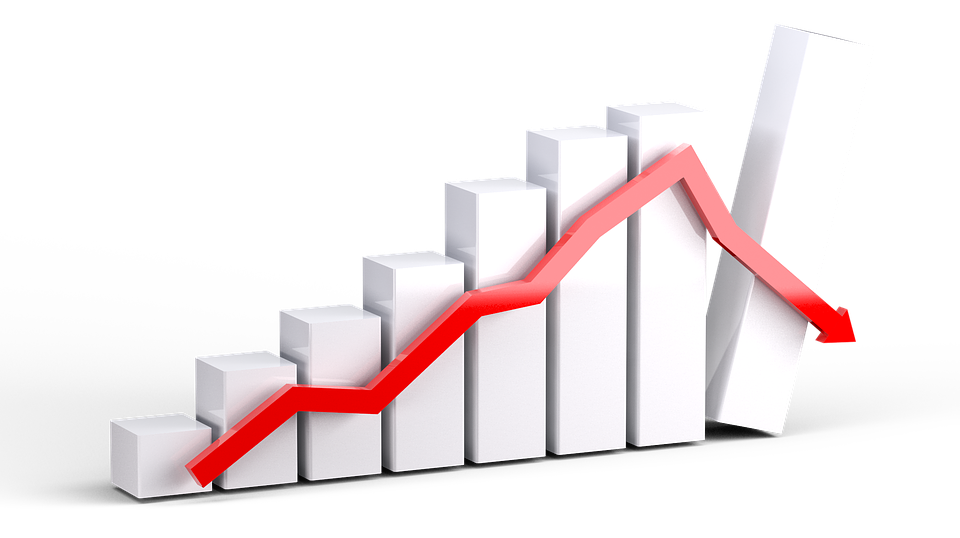
If the value of the VIX index increases, it typically means that the S&P 500 is falling and vice versa. You can check out a live Volatility 75 (VIX) chart on TradingView now, to see how the market is moving today. We’ve also covered how to trade the Volatility 75 Index in detail here.
There are other volatility indexes available to trade too, including the EU Index (VSTOXX) which is the best volatility benchmark in Europe. Alternatively, India’s volatility gauge is based on the option price of the NIFTY Index. Other popular indices include the CBOE Gold (GVZ), the FTSE 100 VIX (VFTSE) and the NASDAQ 100 Volatility (VXN).
For those who prefer quieter markets, there’s also the S&P 500 Low Volatility Index, which measures the performance of the 100 least volatile stocks in the S&P 500. You can check out the historical data and methodology on the S&P Global website. We’ve also listed brokers with volatility index products on the S&P 500 above.
Synthetic indices are simulated markets that are not affected by world events and news. Nonetheless, they do act like real monetary markets and are based on a cryptographic random number generator. These indices are also audited by an independent third-party so that they cannot be manipulated.
Within the synthetic index market, there are three states to be aware of: Trend Higher (where prices rebound into a bullish direction), Trend Lower (where ‘up’ moves are sold off and the market moves into a bearish direction) and Sideways Range (where little movement occurs in either range). Traders should look out for brokers that allow them to trade range markets as well as bullish and bearish.
Pros
As volatility increases, the potential to make more money follows. Investing in volatility indices means capitalising on this. Brokers with volatility index instruments offer access to an interesting and less common asset, helping to diversify portfolios.
Brokers with volatility indexes are also incredibly useful when attempting to understanding whether markets have reached extreme positions, in either direction. With this being said, there are certain limitations that we’ve detailed below.
Cons
Arguably, a volatility index reveals little more than what is already accessible. Much is already shown in the past and current performance of the S&P 500 Index, for example. The daily changes in the VIX show what has happened and what is happening now. But, as all traders will know – past performance is not a guarantee of future trends. Therefore, there is the risk that brokers with volatility indexes offer limited additional insights.
Plus, daily fluctuations are a challenge to keep up with. The regular evaluations of a volatility index can be repetitive and breathless, relying upon this takes up a large amount of time, with the reward unpredictable.
A common occurrence in investing is when too much attention is paid to a short term number, rather than the bigger picture, which could be the case here. Day-to-day, there is limited benefit in monitoring the VIX, but on a month-to-month basis, you might gain much more.
Best Brokers With Volatility Indexes
Brokers with a volatility index are few and far between. So, we’ve detailed the top 4 forex brokers offering the Volatility 75 Index and other relevant indices.
Deriv – Using Synthetic Indices And The VIX
Deriv is one of the market-leading brokers with volatility index instruments, offering synthetic volatility indices alongside the VIX 75. It provides access to high leverage, tight spreads and a selection of two powerful platforms. There are 10 volatility index instruments available across margin trading, options or multipliers, allowing you to utilise almost any strategy.
Instruments
- Deriv’s volatility indices correspond to simulated markets, with constant volatilities of 10%, 25%, 50%, 75% and 100%. You can choose between different tick speeds, generated either every two seconds for indices 10, 25, 50, 75 and 100, or every one second for indices 10 (1s), 25 (1s), 50 (1s), 75 (1s) and 100 (1s)
- It also offers a range of other synthetic indices, including ‘crash’ and ‘boom’ (500 and 1000), step indices, and range break indices (100 and 200)
- Plus, you can trade and profit from range markets as well as trend higher and lower
Accounts
- With the Synthetic Indices EUR account, investors can trade contracts for difference (CFDs) on synthetic index instruments that replicate real-world movements. The account offers up to 1:1000 leverage, with fixed or variable spreads and market execution
- Deriv is also one of the few brokers with volatility index instruments that offers a free demo solution for clients to practice trading strategies. Traders enjoy unlimited virtual funds for as long as needed, which is ideal for beginners looking to try out these exciting markets
Platforms
- Positions are executed on the DTrader or MT5 platforms
- DTrader offers trading directly from charts with a real-time price feed for Rise (up) and Fall (down), among others. Arguably, there’s greater control with DTrader because traders can choose the volatility rate and the contract length. You can also open multiple index trades simultaneously, providing flexibility
- MT5 allows leveraged CFD investing using technical indicators and tools alongside a selection of plugins, signals and bots. There is a number of pending order limits, plus, you can program your own robots using DBot, the broker’s own programming tool
- To get started, register for a Synthetic Indices account and set up your platform password through the website, you can begin investing straight away
Fees & Payments
- Deriv clients enjoy zero commissions and no minimum deposit in the Synthetic Indices account. Depending on the payment method chosen, there may be a minimum deposit or withdrawal amount. Some methods may also involve a transaction fee
- The broker also offers low-pip spreads on CFDs and a useful calculator for margin and swaps on the website. These help you to estimate the costs of keeping positions open overnight
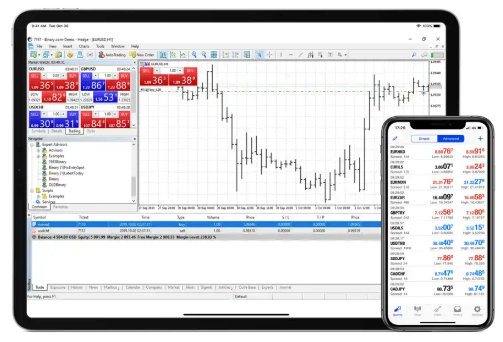
IC Markets – Using The VIX
- IC Markets offer two types of accounts, a Standard solution and a Raw Spread account (which is their market-leading option)
- There’s no commission on the Standard account, but there is a mark-up applied to the spread of 1 pip above the raw inter-bank rate from their liquidity providers. This is a competitive rate vs alternative brokers with volatility indexes.
- Raw Spread accounts show raw inter-bank spreads received from liquidity providers. There is a commission charge of $7 per standard round turn
- To open an account with IC Markets, simply click on the “Open a Live Account” link on their website and complete your application form
- Once your online application form has been approved by their client team, you will be emailed your account login details and password, and then you’re ready to go
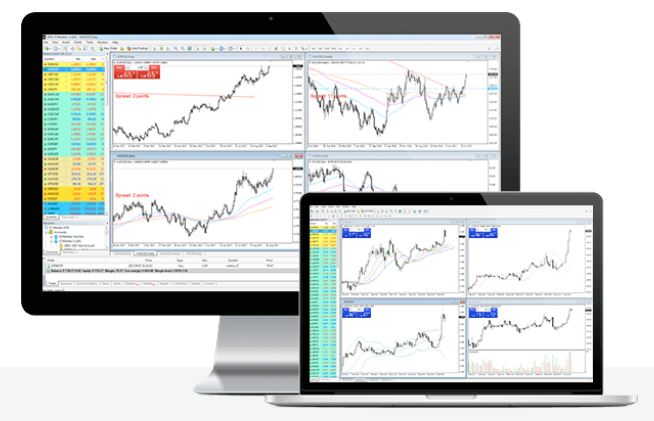
Pepperstone – Using The VIX
- One of the best all-round brokers with volatility index products
- Pepperstone offers both demo and live accounts
- Demo accounts automatically expire after 30 days but can be changed to a live account
- There’s a selection of three platforms for volatility index trading: MT4, MT5 and cTrader
- They recommend an initial deposit of £500 to trade, but this is not a requirement
- To open a live account, just visit the homepage, select ‘Live Account’, then ‘Open a Live Trading Account’
- It will take about 10 minutes to complete the set-up process
- You’ll be prompted to complete an onboarding quiz and provide your account opening ID documents
- Once they have verified your documents, they’ll send through your login information
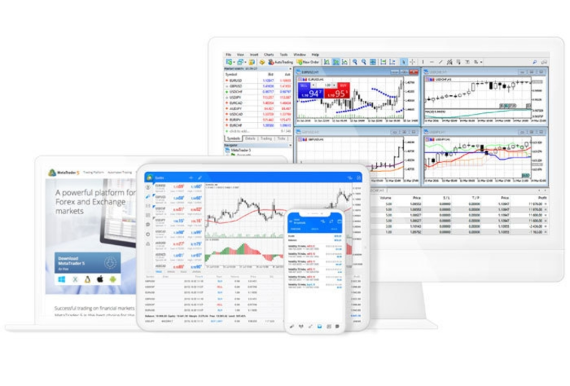
IFC Markets – Using The USVIX
- There are no fees to open an IFC Markets account
- Commission is charged for opening and closing positions on stock CFDs. This varies depending on the stock exchange – starting at 0.1% of the position volume
- You can only have one of each type of account, either: real or demo, one platform, account type (Beginner, Micro, Standard Fixed/Floating), currency, netting or hedged
- Opening an account is quick, easy and free. You just need to register to open an account using the broker’s website
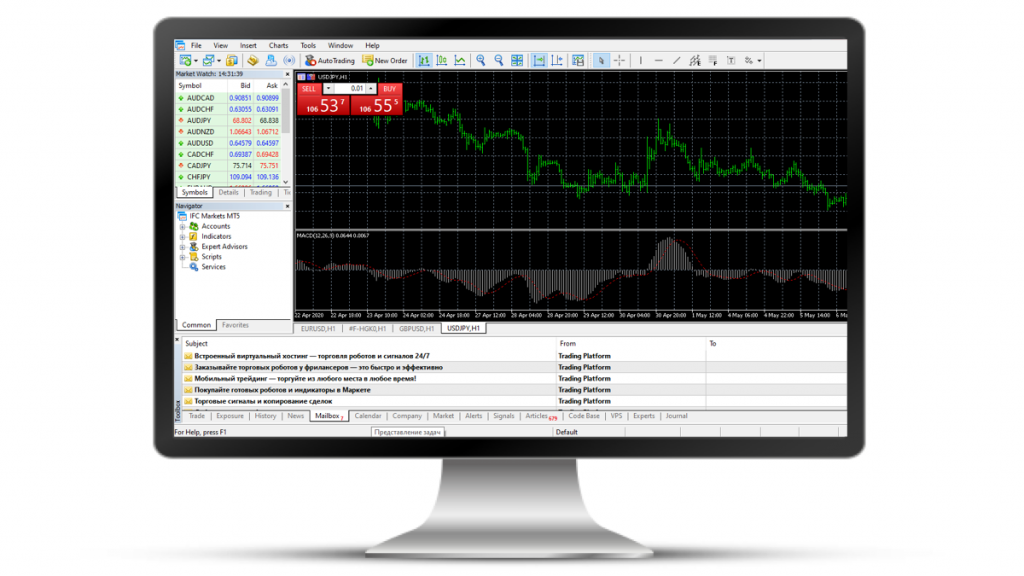
Final Word
Brokers with volatility indexes provide traders with an asset class that is unrivalled by your traditional forex brokers. Therefore, they’re a popular option for those looking to branch out to new instruments.
When trading in a volatile market, there are a number of ways to stay ahead of the game. Sentiment plays a large part in many strategies for stock markets, so with this in mind, a volatility index is useful. With that being said, an index still has its limitations and is far from perfect. It is at the trader’s discretion to decide how much to rely on its insights.
FAQs
How Is The Volatility Index Calculated?
The CBOE Options Exchange (CBOE Options) calculates the VIX Index using standard SPX options and weekly SPX options. Standard SPX options expire on the third Friday of each month and weekly SPX options expire on all other Fridays. Only SPX options with more than 23 days and less than 37 days to the Friday SPX expiration are used. These are then weighted to yield a constant maturity 30-day measure of the expected volatility of the S&P 500 Index. Brokers with volatility index instruments may offer products on various major exchanges.
How Is Implied Volatility Different From Actual Volatility?
Rather than measuring realised or historical volatility of the S&P 500, the VIX projects its implied or expected volatility 30 days in the future. Implied volatility is a prediction only. It’s important to note brokers with volatility index products should have appropriate risk warnings on their website.
Why Is The Volatility Index Sometimes Referred To As The “Fear Gauge”?
The media and brokers with volatility index instruments often refer to the VIX as a “fear gauge” since it is a measure of investor sentiment. The VIX tends to rise as investors perceive a higher likelihood of prices declining, and so it is a good predictor of market-wide concern.
When Is A Good Time to Trade Volatility Index 75?
The best time to trade the Volatility Index 75 is when the price reacts to previous support or resistance levels. Results from research on the best time to trade Volatility 75 indicate that major trend reversals, range breakouts and price jumps happen around the 11:00 GMT and 23:00 GMT. We’ve listed some of the best brokers with volatility index assets in our guide above.





